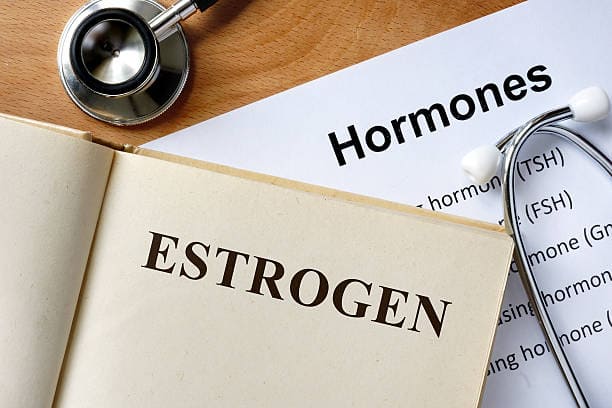The estrogen test, also known as estrone (E1), estradiol (E2), estriol (E3), or estrogenic hormone tests, is a valuable tool used by doctors to assess various concerns related to puberty, fertility, menopause, and other health conditions.
Estrogen, a crucial hormone in women’s health, influences factors such as bone strength and reproductive functions. It exists in different forms, each with its own functions and significance.
If your doctor suspects an imbalance of specific estrogen types, they may recommend an estrogen test. This test, typically conducted through a simple blood sample, evaluates three main types of estrogen:
- Estrone (E1): Predominant in women after menopause.
- Estradiol (E2): Predominant in non-pregnant women.
- Estriol (E3): Increases during pregnancy.
Who Needs an Estrogen Test?
- Women experiencing symptoms like post-menopausal vaginal bleeding, menstrual irregularities, infertility, or menopausal symptoms such as hot flashes and night sweats may require estradiol or estrone testing.
- Those undergoing hormone therapy for menopausal symptoms may undergo E1 or E2 testing to monitor treatment effectiveness.
- Girls with early or delayed sexual organ development may undergo E1 and E2 testing.
- Estriol (E3) testing is common during pregnancy to monitor fetal health, as abnormal levels could indicate potential issues, although further tests are usually necessary for confirmation.
The estrogen test allows doctors to monitor changes in estrogen levels over time, aiding in diagnosis and treatment decisions.
Men also possess estrogen, although typically at lower levels compared to women. Imbalances in estrogen levels in men can result in various health issues.
Reasons for Estrogen Testing in Men:
- Assessing delayed puberty.
- Diagnosing gynecomastia, characterized by enlarged male breasts.
- Investigating elevated estrogen levels about low testosterone or androgen levels, crucial hormones in men.
- Identifying tumors that produce estrogen.
Estrogen Test Procedure:
Preparation: No special preparation is required for an estrogen test. Unlike some blood tests, there’s no need to fast. However, it’s essential to inform your doctor about any medications or supplements you’re taking, especially birth control pills or hormone therapy, which might influence test results.
Testing Methods:
- 24-Hour Urine Test: You’ll be provided with a container to collect all urine over 24 hours. Your doctor will provide instructions on proper collection and storage. The samples are then analyzed either in the office or in a lab.
- Blood Test: This is the most common method. A small amount of blood is drawn from a vein in your arm by a healthcare professional. The blood sample is then sent to a lab for analysis.
Interpreting Estrogen Test Results
The interpretation of estrogen test results hinges on factors such as age, gender, and for women, pregnancy status and menstrual cycle phase.
Normal estrogen levels vary according to these factors, and deviations from the norm can provide insights into potential health issues, although they aren’t conclusive on their own.
High levels of Estrone (E1) or Estradiol (E2) in girls and women may indicate early puberty or ovarian tumors, while in boys and men, elevated E1 and E2 levels might signify delayed puberty, testicular tumors, or gynecomastia.
Elevated E1 and E2 levels in both genders could point towards conditions such as hyperthyroidism, liver cirrhosis, or adrenal gland tumors. In pregnant women, high Estriol (E3) levels may suggest impending labor.
Conversely, low estrogen levels in women may signal issues like pituitary hormone deficiencies, ovarian dysfunction, miscarriage (when Estriol levels decrease), eating disorders, or Turner syndrome.
Low Estradiol levels are typical after menopause.
Additional Tests and Consultation
Depending on the estrogen test results and accompanying symptoms, your doctor may recommend further tests to confirm a diagnosis.
For instance, testing levels of follicle-stimulating hormone (FSH), which regulates the menstrual cycle in women and stimulates egg production, can provide valuable information. In men, FSH stimulates sperm production.
If infertility or early puberty is suspected, tests for FSH and luteinizing hormone (LH) may be recommended for both sexes.
When discussing hormone levels or any health concern with your doctor, provide detailed information about your symptoms. The more comprehensive your description, the better equipped your healthcare provider will be to offer assistance.
Sources:
- University of Rochester Medical Center: Estrogen’s Effects on the Female Body.
- Lab Tests Online: Estrogens: The Test.
- University of Rochester Medical Center: Estradiol (Blood).
- Mayo Medical Laboratories: “Test ID: UE3.”
- Mayo Clinic: “Sex-based Vascular Physiology.”
- MedLine Plus: “Estrogen Levels Test.”

